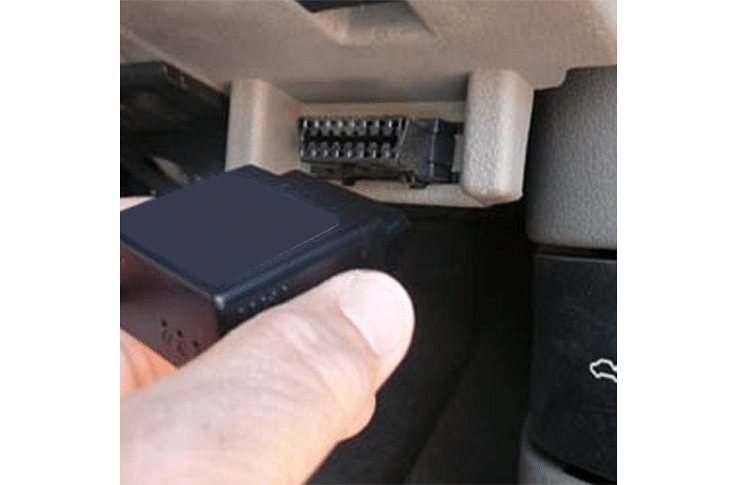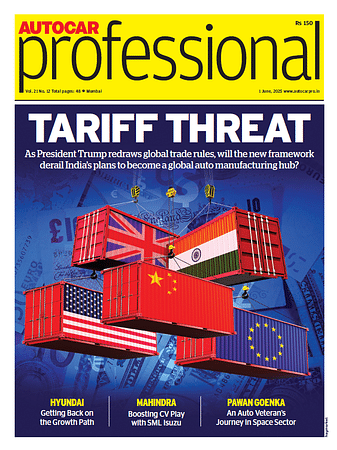MapmyIndia to hitch speedy IoT ride for CASE
MapMyIndia is set to deploy machine learning and leverage the expansive capability of the Internet of Things to enable vehicle manufacturers to navigate smoother into the global CASE megatrend
The unrelenting pace of disruptive technology has the entire automotive supply chain, be it an OEM, supplier, the aftermarket or the dealer, constantly strategising on the path ahead. Few, if any, can afford to stay unchanged. Change is also coming fast on the navigation front and MapmyIndia, the Delhi-based data technology and mapping company, which introduced and pioneered standalone navigation devices for vehicles in India way back in 2007, is now exploring newer pastures in the automotive mainland as technology evolves and upgrades itself to the next level.
At first a novelty and then a de rigueur fitment in cars, navigation devices eventually led to embedded map solutions in OEM-fitted infotainment systems in India. For the past decade, MapmyIndia is today the sole data supplier to over 80 percent of all such navigation-equipped vehicles sold in the country, with a major share coming from Maruti Suzuki, Toyota Kirloskar Motor, Honda Cars India and Mahindra & Mahindra.
Now, as part of a strategic move to ensure it is ahead of the curve in the CASE (Connected, Autonomous, Shared and Electrification) global megatrend, the company aims to leverage the benefits of IoT (Internet of Things) and Big Data into its maps to offer even more advanced navigation solutions to customers (OEMs) and end-users. This, it says, will help accelerate the EV adoption curve, as well as facilitate better vehicle safety on the road with a host of high-end location features working in conjunction with the vehicle’s brain and acting as active safety systems to avoid road crashes and fatalities.

On-board diagnosis-based device plugs into OBD-II port on side of the steering wheel and allows vehicle tracking and speed monitoring.
“In everything that we do, as a hardcore technology and data company, our focus is on how to make the world better by the use of IoT and Big Data,” says Rohan Verma, CEO and ED, MapmyIndia. Verma took charge of the company’s consumer business in 2004 after graduating from Stanford, where he studied electrical engineering and developed a strong inclination for product development.
“The automotive ecosphere is getting disrupted and going through big changes with the requirements of consumers as well as that of the automobile industry evolving with increasing focus on the need for mobility. MapmyIndia is uniquely positioned to enable automobile companies to transition to CASE and the technologies that we offer help not just passenger vehicles, but two-wheelers, commercial vehicles and EVs as well,” he adds.
Spider maps for EVs
Like most technologies, in-vehicle navigation has also seen a sea change over the years. From being shown in a handheld PND (personal navigation device), it moved to getting embedded into the vehicle’s infotainment system to now getting projected from the user’s mobile phone onto the vehicle’s touch-screen unit, which the company calls ‘Connected Navigation’. The maps have evolved too, catering to the considerably varied needs of the user, who doesn’t only require to go from point A to B, but, in case of an EV, also needs to reach an EV charging point with a given amount of charge in the battery.
To address this specific EV-driven need, MapmyIndia has developed solutions which it calls ‘Spider Maps’. “Our AI/ML algorithm model takes into account elevation, descent, live traffic, weather and all other related parameters which could impact battery range. It also takes note of the vehicle load or AC usage and determines the most suitable route for a vehicle to take at a given point in time,” says Verma.
The Spider Maps also factor in the number of charging stations along a route and with the company’s dynamic IoT connectivity suite, keep track of real-time availability of empty charging slots. This enables the algorithm to select the most optimal way of completing a journey within a limited battery range, and in the least possible time. Good news for EV drivers who generally have to deal with a modern phenomenon of in-vehicle stress — range anxiety.
Rohan Verma: "In everything that we do, as a hardcore technology and data company, our focus is on how to make the world better by the use of IoT and Big Data."
To set up a seamless communication channel between the algorithm and the core systems of the vehicle, MapmyIndia utilises a telematics control unit (TCU), which is deeply embedded into the vehicle’s wiring architecture and retrieves data from the CAN to constantly monitor vehicle health and gather data on battery temperature and the state of charge.
“We are marrying the theoretical model of the battery with the real-world conditions and this is what our algorithm is trying to achieve. OEMs are turning to us to get these unique solutions, which will help drive adoption of e-mobility. And that is the reason why we are spending so much in terms of R&D,” remarks Verma. In-built navigation in the recently launched Hyundai Kona EV is the latest example of the company’s strides in technology.
Digital Map Twin
With shifting paradigms in the automotive arena and advanced technologies in the form of driver assistance and safety systems (ADAS) in modern-day vehicles, the company is building an HD map called ‘Digital Map Twin’. The Digital Map Twin carries detailed information of major road corridors across India and utilises radar and camera technology to map these routes. These maps store information down to the lane level and can 'tell' about potholes, speedbreakers and road banking, to the extent of whether the road or some parts of it are driveable or not. With the HD Maps, the company aims to assist the driver and the vehicle in averting any possible mishap on the road due to engineering or infrastructure flaws.
“ADAS is more impactful at the mass scale and in India, we are trying to deploy this technology from a safety point of view to maximise the safety of drivers, passengers and pedestrians,” says Verma.
The map can 'talk' to the vehicle through the use of an application, back-end software, camera and a gadget which has a GPS sensor in the form of the accelerometer and an IMU. This helps it detail the speeds the vehicle is doing and the vibrations being felt. Using a camera mounted at the front of a car, the system can use AI and ML to judge the obstacle that is blocking vehicle movement in the upcoming few metres. With Big Data, the map determines that historically people are hard-braking at a particular point, and thus, issues a warning – an audible or visual alert to the driver – to be aware of a probable flaw in the road coming up ahead. Even if the human intervention doesn’t come in time, there can be autonomous emergency braking from the vehicle itself to avoid fatal road accidents from occuring.
“We can start clustering behaviour on the basis of location and across aggregates and decipher the live condition of the road, which could lead to safety accidents. Near-miss data points are also lodged into the database for enhancing the maps. That is how we have taken forward this traffic information to now become safety information and have integrated this into our navigation to enhance road safety,” he adds.
How maps are driving shared mobility
With the phenomenon of CASE seemingly being the major enabler of growth for companies in the coming future, Verma believes that OEMs need to evolve and along with making vehicles also offer mobility as a service (MaaS). In terms of offering solutions for shared mobility, MapmyIndia has been a key supplier to fleet operators since 2011, and offers its navigation, tracking and fleet management technologies to the likes of Avis and now Ola and Uber. “With our tracking technology, we enable this whole stack of mobility as a service, and we can help transition the automotive OEMs to a CASE world,” points out Verma.
The company, which saw a massive impact on its consumer business with the advent of Google Maps in 2007-08, is seeing a huge return of demand to its Move app for navigation and tracking. According to Verma, “Google Maps is pervasive, we have no doubts about that. But, as a second alternative, the Move app is good enough and, in many ways, better. To take on this giant, we have to put in our efforts and we are earmarking more marketing budgets towards the same now.”
Automotive, not surprisingly, is a big business driver for MapmyIndia, which generates 60 percent of its revenues from this vertical. The balance comes from the 5,000-odd enterprise customers relying on its tracking services and many disruptive start-ups in the technology space using its APIs (application programming interfaces) to build navigation-based business applications. The company recorded a turnover of around Rs 200 crore in FY2019, which constitutes 30 percent year-on-year growth in its automotive business. Apart from its headquarters in New Delhi, it has an R&D centre in Bangalore and has also signed a joint venture with a Bangalore-based company for product design.
Getting from point A to point B in grid-locked traffic in most Indian metros and A-towns is fast becoming a nightmarish situation and vehicle driver/owner reliance on accurate mapping and navigation tools is growing exponentially. In a world that seems to be hard-pressed for time, digital tools that facilitate reaching a destination smoothly in a not-so-lonely planet will only see a surfeit of demand.
(This article was first featured in the December 1, 2019 issue of Autocar Professional)
RELATED ARTICLES
Hyundai: Going Beyond Business
Hyundai Motor India sets an example for manufacturing companies across the country with its extensive and impactful soci...
Pawan Goenka: From Rural Madhya Pradesh To India's Space Corridors
The story of Pawan Goenka's life mirrors that of India's ascent—humble beginnings, bold bets, and a mission to make Indi...
M&M and SML Isuzu: Strategy, Synergy, and Game Plan
Mahindra & Mahindra has acquired SML Isuzu, a key player in the small and medium sized CV market in India. But can this ...





 01 Jan 2020
01 Jan 2020
 5734 Views
5734 Views






 Kiran Murali
Kiran Murali



 Shahkar Abidi
Shahkar Abidi

